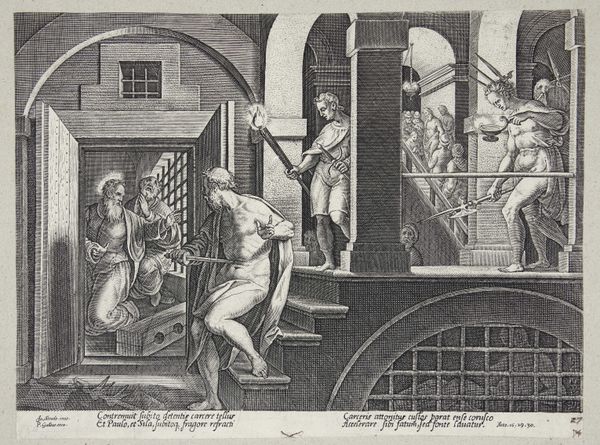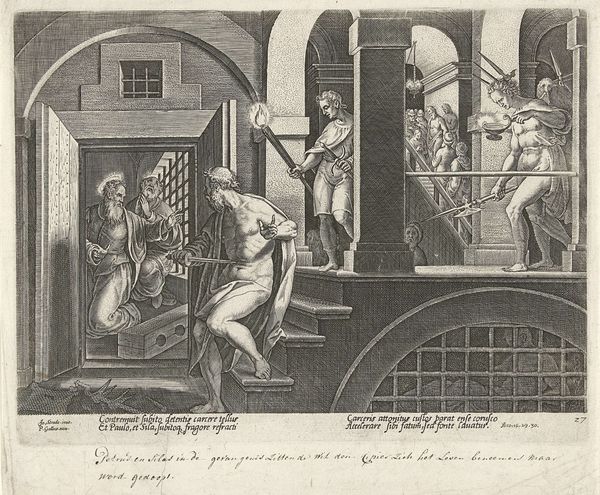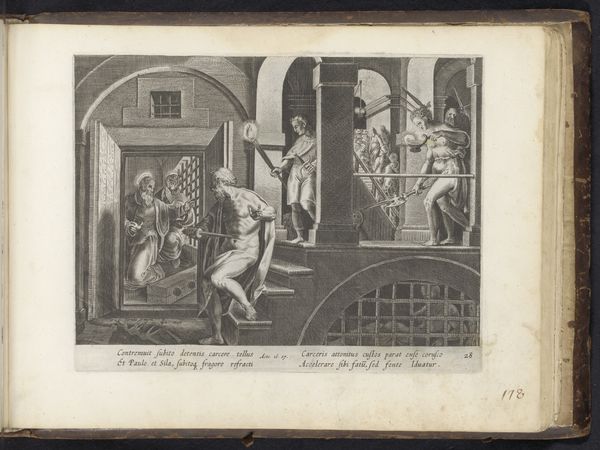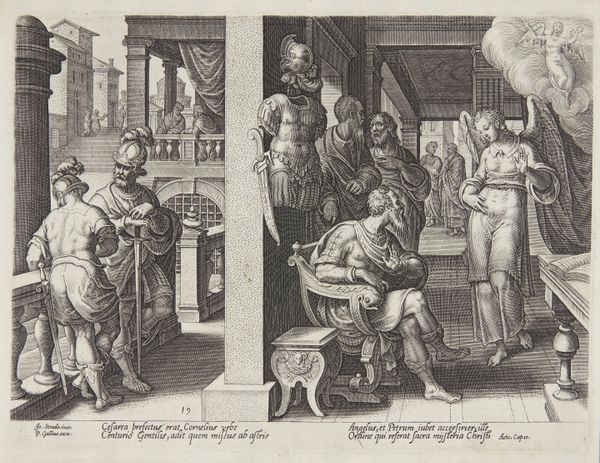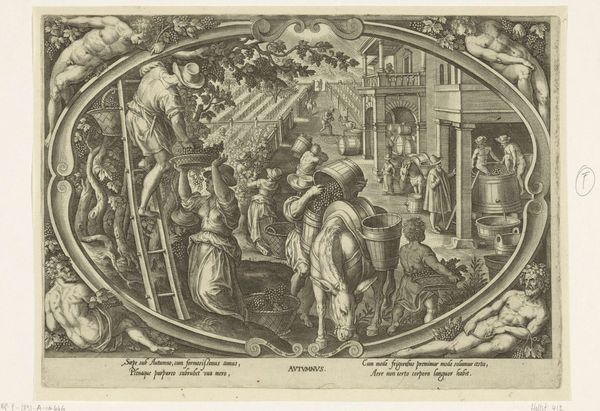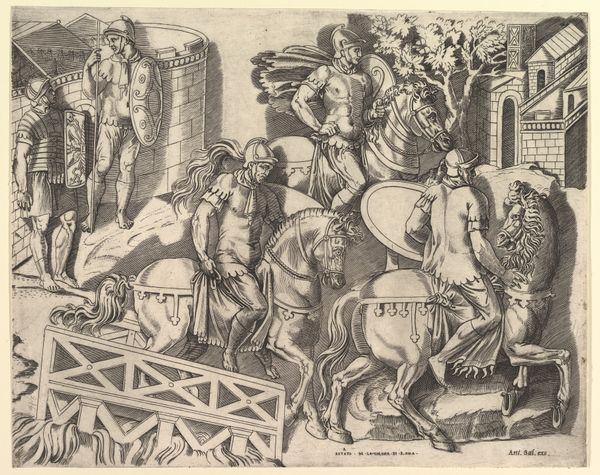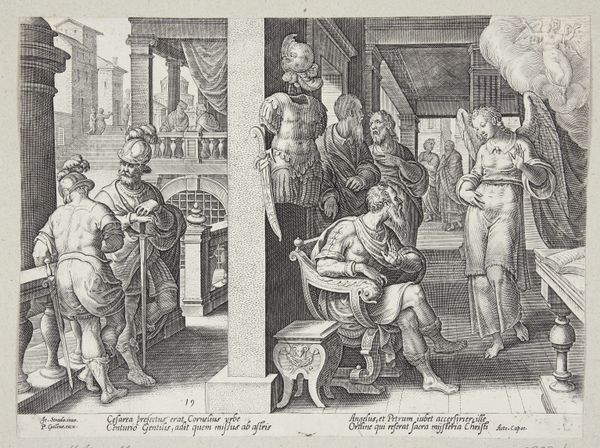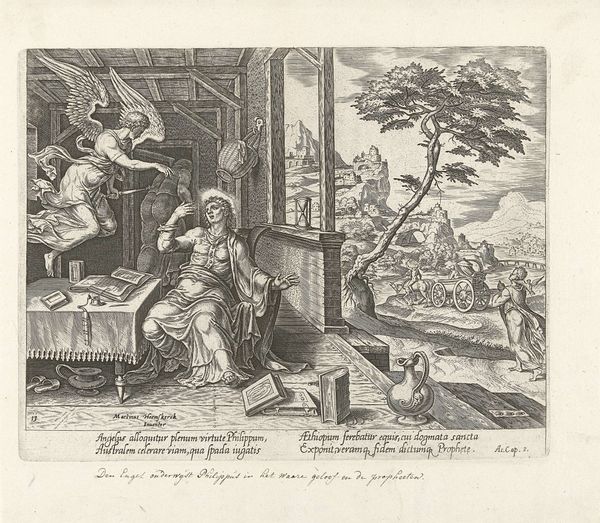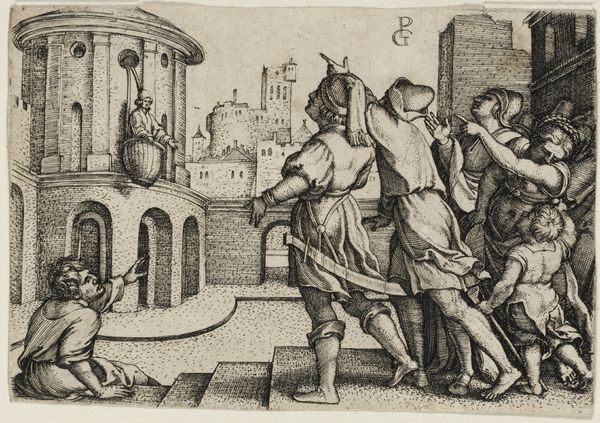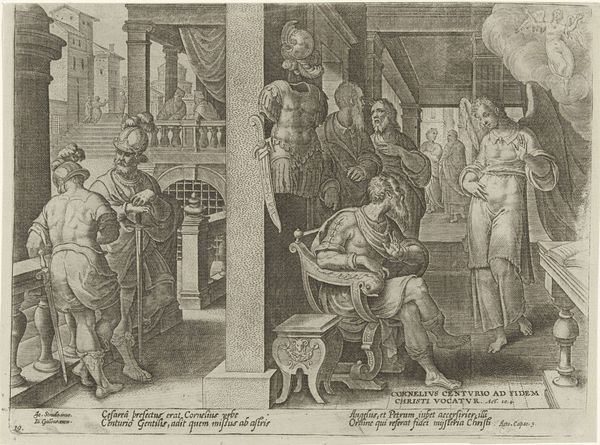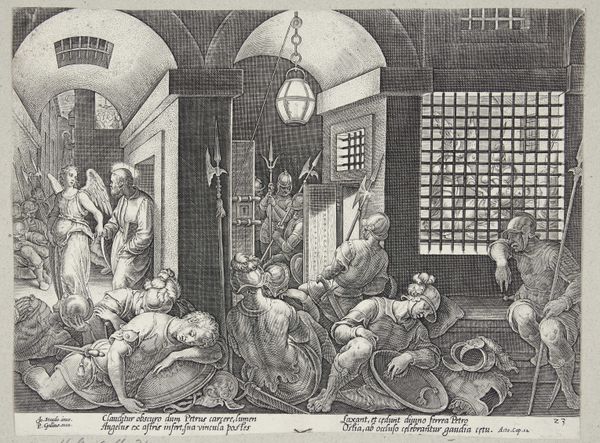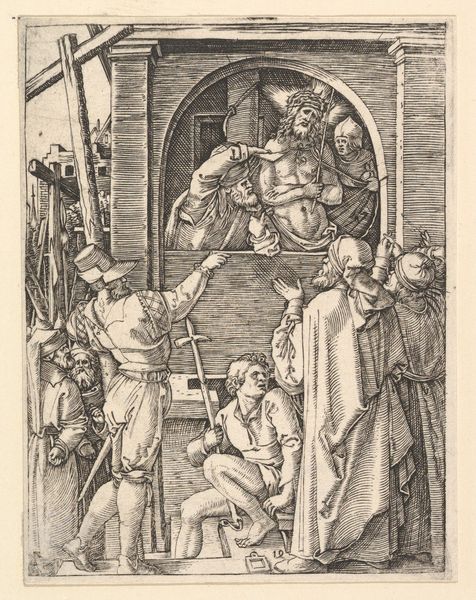
Dimensions: 202 mm (height) x 265 mm (width) (plademaal)
Curator: My first impression is one of shadowy drama, all rendered in the delicate lines of an engraving. The architecture is striking, but also foreboding. Editor: Yes, the theatrical lighting really emphasizes that Baroque drama, doesn't it? This is "The Conversion of the Warder," a print made by Philips Galle in 1582. The artwork is currently held in the collection of the SMK, the National Gallery of Denmark. Galle was deeply influenced by Mannerism, which explains that heightened sense of emotion and stylized form. It shows a scene from the Acts of the Apostles. Curator: Ah, I thought I sensed some Biblical undertones. There's such a stark contrast in the depiction of figures—some almost floating, angelic, while others are quite grounded, tormented even. The central figure is about to take his own life but then, the faith and message changes his mind! Editor: Exactly. What Galle depicts here is more than a mere change of heart. Consider the historical context: religious conflicts raged throughout Europe, particularly between Protestants and Catholics. So Galle, a devout Catholic, is very clearly highlighting what he believes to be the truth, presenting conversion as a positive—almost miraculous—event that prevents one from, in his view, sinful acts such as suicide. Curator: It’s remarkable how Galle captures the turning point, the precipice of decision. The man is frozen in place, sword in hand, as light floods in. Is it salvation, damnation, or simply, I don’t know, self-preservation that changed his mind? Editor: It's complex, isn't it? This piece encourages us to question power dynamics. The warder held power through imprisonment. However, faith—in this narrative—becomes a source of even greater power, leading not only to personal salvation but, as depicted here, societal change too. I'm particularly drawn to the ways these prints allowed theological and political debates to circulate more widely during the Reformation and Counter-Reformation. Curator: Indeed. Well, regardless of where you stand, the visual narrative woven in those stark lines holds such raw emotional resonance. A powerful image, to be sure. Editor: A perfect visual encapsulation of an era defined by radical upheaval, yes, though maybe we ought to see the more mundane elements too? After all, many common people turned to the New Testament and its promises, which might also include liberation and the potential for new life.
Comments
No comments
Be the first to comment and join the conversation on the ultimate creative platform.
